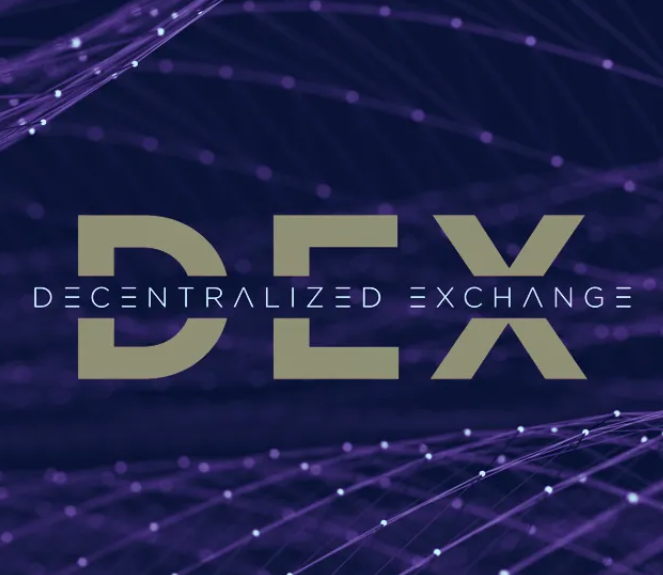bbc.towzdog.com – How to Use Decentralized Exchanges: A Comprehensive Guide In recent years, decentralized exchanges (DEXs) have become an integral part of the cryptocurrency ecosystem, providing users with a way to trade digital assets without relying on centralized authorities. This article will guide you through how to use decentralized exchanges, explaining their features, benefits, and risks. Whether you’re a seasoned trader or new to the world of cryptocurrencies, this guide will help you navigate the DEX landscape effectively.
What Are Decentralized Exchanges?
Definition of Decentralized Exchanges
Decentralized exchanges (DEXs) are trading platforms that allow users to buy and sell cryptocurrencies directly with one another, without the need for a central authority or intermediary. Unlike traditional exchanges, which require users to deposit funds into an exchange wallet, DEXs facilitate peer-to-peer transactions through smart contracts on blockchain networks.
How DEXs Work
DEXs operate using automated market makers (AMMs) or order book models. AMMs allow users to trade assets based on liquidity pools rather than traditional buy/sell orders. Users provide liquidity to these pools by depositing assets, earning fees in return. On the other hand, order book-based DEXs function similarly to centralized exchanges, matching buy and sell orders from users.
Benefits of Using Decentralized Exchanges
1. Enhanced Privacy
Using DEXs provides users with greater privacy compared to centralized exchanges. Users can trade without having to share personal information or complete lengthy verification processes, maintaining control over their data.
2. Ownership of Assets
When using a DEX, users retain ownership of their funds throughout the trading process. Unlike centralized exchanges, where users must deposit assets into the platform, DEXs allow users to trade directly from their wallets.
3. Security
Decentralized exchanges reduce the risk of hacks associated with centralized platforms. Since funds are not held in a central wallet, there’s a lower likelihood of mass theft. Users are responsible for their private keys, further enhancing security.
4. Access to a Wide Range of Assets
DEXs often support a diverse array of tokens, including lesser-known cryptocurrencies and newly launched projects. This accessibility allows users to explore various trading options that might not be available on centralized exchanges.
5. Global Accessibility
Decentralized exchanges are accessible to anyone with an internet connection, promoting financial inclusion. Users can trade without geographical restrictions, providing a solution for individuals in regions with limited access to traditional banking systems.
How to Use Decentralized Exchanges: Step-by-Step Guide
Step 1: Choose a Decentralized Exchange
Before you can start trading, you need to select a DEX. Some popular options include:
- Uniswap: An AMM-based DEX known for its user-friendly interface and extensive token support.
- SushiSwap: A community-driven AMM that offers various features like yield farming and staking.
- PancakeSwap: Built on the Binance Smart Chain, PancakeSwap provides lower fees and faster transactions than Ethereum-based DEXs.
- dYdX: A DEX that combines spot and derivatives trading with advanced features.
Step 2: Set Up a Cryptocurrency Wallet
To trade on a decentralized exchange, you need a compatible cryptocurrency wallet. Some popular options include:
- MetaMask: A widely used browser extension wallet that supports Ethereum and ERC-20 tokens.
- Trust Wallet: A mobile wallet that supports various blockchains and tokens.
- Coinbase Wallet: A user-friendly wallet that allows you to interact with DEXs directly.
Step 3: Fund Your Wallet
Once your wallet is set up, you need to fund it with cryptocurrency. You can purchase tokens from a centralized exchange or transfer them from another wallet. Ensure that you have the specific tokens required for trading on your chosen DEX.
Step 4: Connect Your Wallet to the DEX
- Visit the website of your chosen DEX.
- Look for the “Connect Wallet” button, typically located at the top right corner of the page.
- Select your wallet from the available options and follow the prompts to authorize the connection.
Step 5: Trading on the DEX
Using an AMM-Based DEX (e.g., Uniswap)
- Select the Tokens: Choose the token you want to swap from and the token you want to swap to.
- Input the Amount: Enter the amount you wish to trade. The platform will show you the expected output based on current market prices.
- Review the Fees: Check the transaction fees, including network gas fees, before confirming the trade.
- Confirm the Transaction: Click on the “Swap” button, review the transaction details in your wallet, and confirm the trade.
Using an Order Book DEX (e.g., dYdX)
- Select the Trading Pair: Choose the pair you wish to trade (e.g., BTC/ETH).
- View the Order Book: Review the current buy and sell orders in the order book.
- Place an Order: Decide whether to place a market order (buy/sell at the current market price) or a limit order (set your price). Enter the quantity and confirm the order.
Step 6: Withdrawing Your Tokens
Once your trade is complete, your tokens will be available in your wallet. You can choose to hold, trade further, or withdraw your assets to another wallet or exchange as needed.
Risks of Using Decentralized Exchanges
1. Smart Contract Vulnerabilities
While DEXs enhance security in many ways, they are still susceptible to vulnerabilities in their smart contracts. Hacks and exploits can occur if a smart contract has flaws, potentially resulting in the loss of funds.
2. Liquidity Risks
Trading on a DEX may involve lower liquidity compared to centralized exchanges, especially for less popular tokens. This can lead to slippage, where the price of a trade differs from the expected price due to insufficient liquidity.
3. Transaction Fees
Gas fees on the Ethereum network can be high, especially during periods of high demand. Users must account for these costs when trading on DEXs, as they can significantly impact profitability.
4. Market Volatility
Cryptocurrency markets are known for their volatility. Users should be cautious when trading, as prices can fluctuate rapidly, leading to potential losses.
Current Trends in Decentralized Exchanges
1. Liquidity Pools and Yield Farming
Many DEXs have integrated liquidity pools and yield farming options, allowing users to earn additional rewards for providing liquidity. This trend incentivizes users to contribute to liquidity, enhancing trading conditions on the platform.
2. Cross-Chain DEXs
As the DeFi ecosystem expands, cross-chain DEXs are emerging, allowing users to trade assets across different blockchains. This innovation enhances accessibility and flexibility for traders.
3. Enhanced User Interfaces
Developers are focusing on improving user interfaces to make DEXs more accessible to newcomers. Intuitive designs and simplified processes are essential for attracting new users to decentralized trading.
4. Regulatory Developments
As DEXs gain popularity, they may face increased scrutiny from regulators. Users should stay informed about potential regulatory changes that could impact DEX operations and user rights.
Conclusion
Using decentralized exchanges offers numerous advantages, including enhanced privacy, security, and access to a wide range of assets. However, users must also be aware of the associated risks and challenges. By following the steps outlined in this guide, you can navigate the world of DEXs effectively and make informed trading decisions.
For ongoing updates and insights into the evolving DeFi landscape, you can visit CoinMarketCap for real-time data and analysis.




